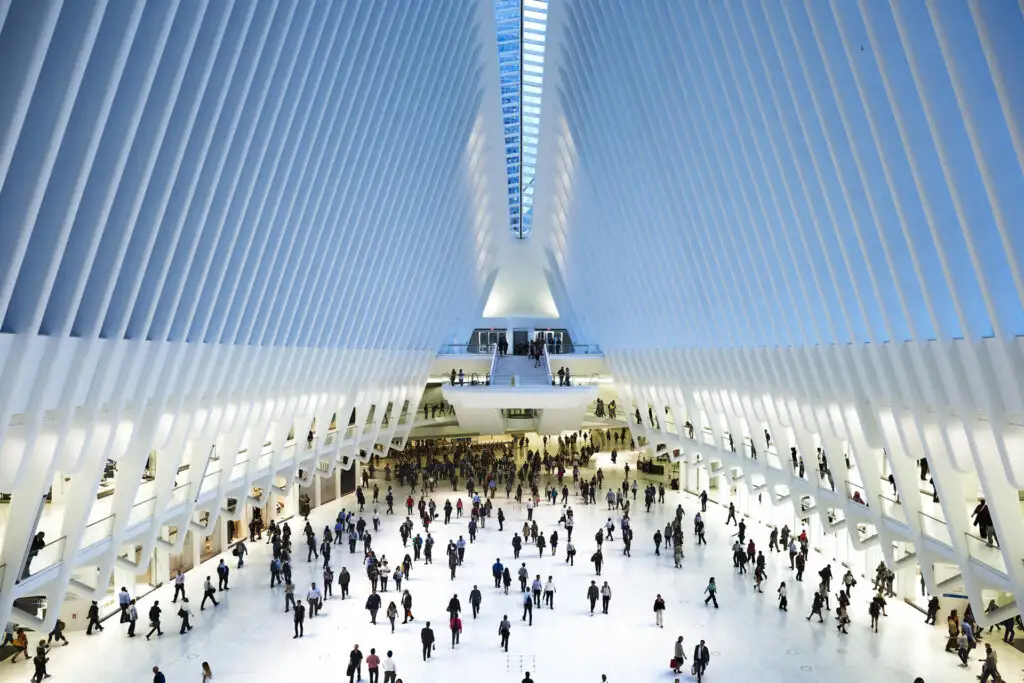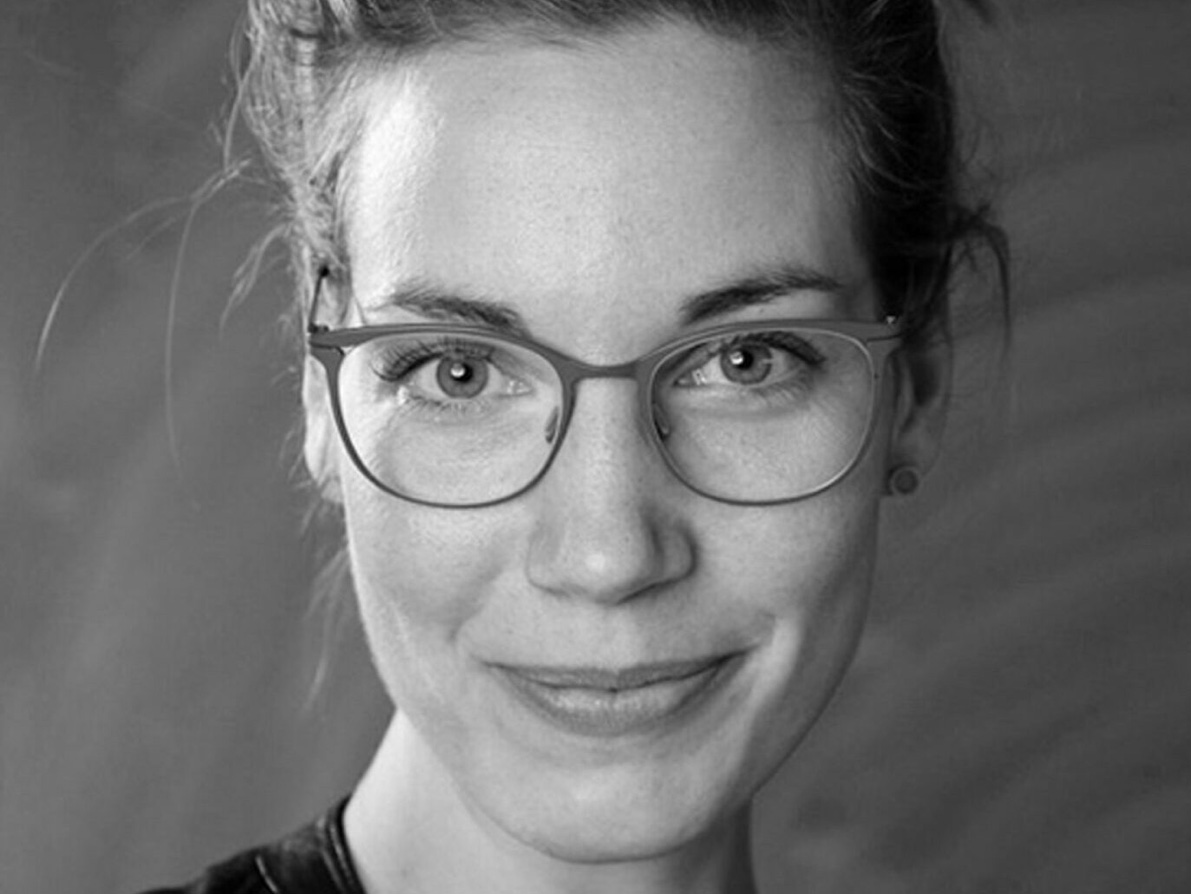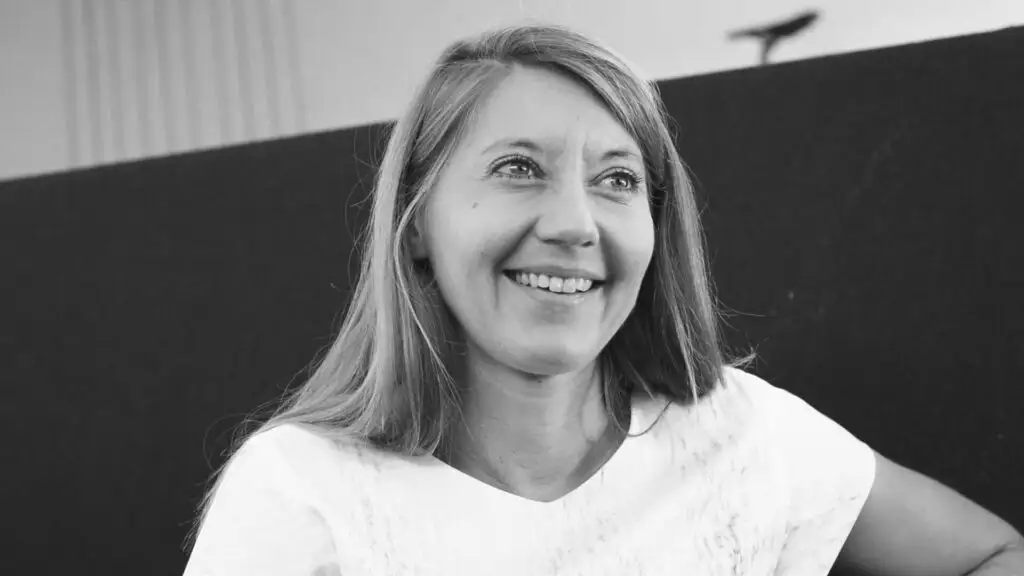Almost 150 years after its founding, with the Design Campus, the Kunstgewerbemuseum Dresden (Dresden Museum of Applied Arts) is reverting to its roots as an educational institution.
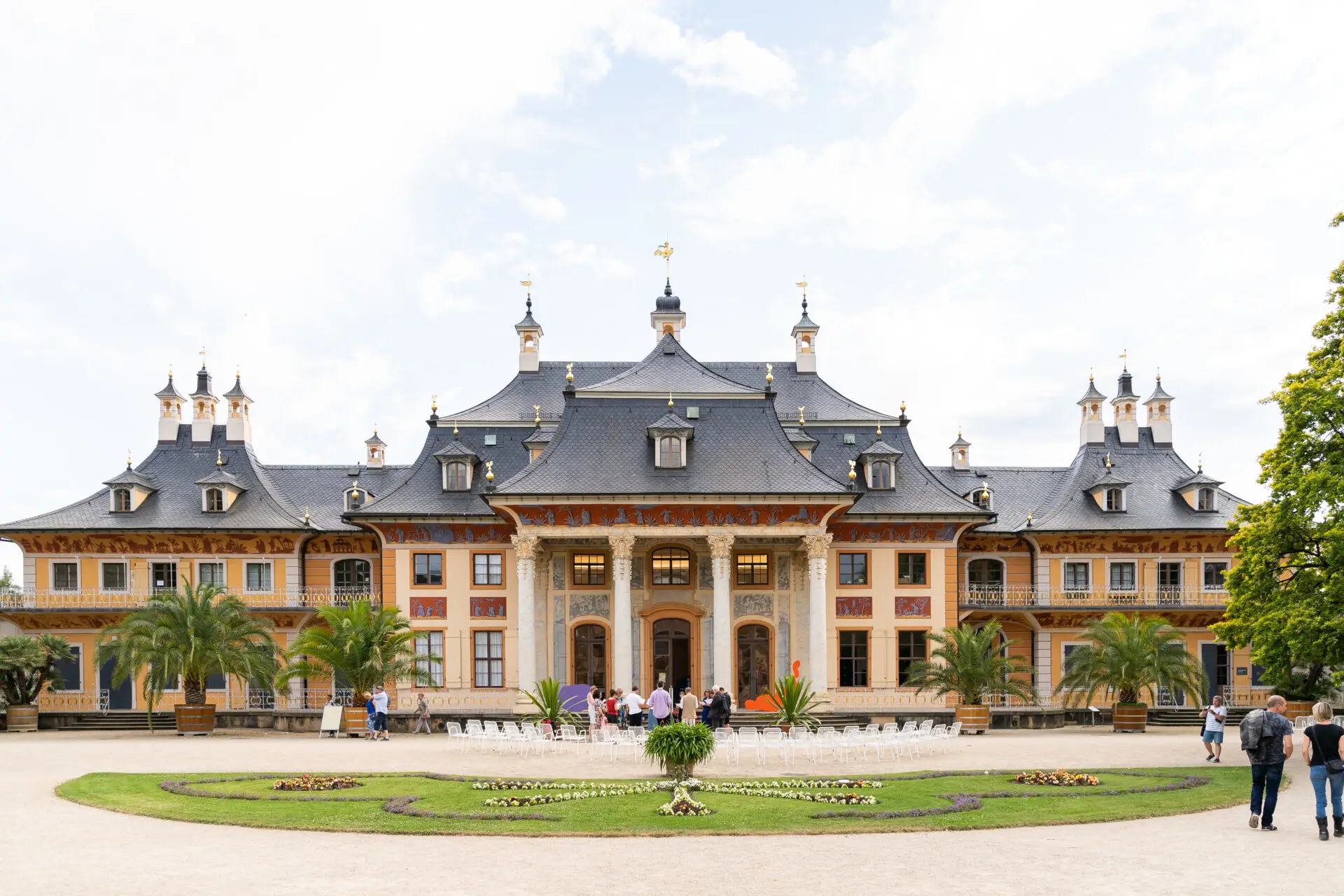
At that time a reaction to the upheavals of industrialization, the founding concept is now being recalibrated for the 21st century against the backdrop of societal transformation through digitalization and climate change, and is being conceived for the future – as a place and school for utopias.
A guest contribution by Thomas A. Geisler, Director of the Kunstgewerbemuseum
Anyone who visits Dresden is, of course, familiar with the Zwinger which accommodates the Meissen Porcelain Collection, with the Grünes Gewölbe (Green Vault) as an art and treasure chamber, with the Old Masters and the Raphael Madonna, with the Semper Opera house and the restored Frauenkirche. A trip to Pillnitz Palace and Park about ten kilometers up the Elbe, past the ‘Blue Wonder’ – an imposing early cantilever truss bridge structure located in the middle of idyllic surroundings – is an additional attraction for weekend guests. Then, a trip on one of the paddle steamers along the Elbe meadows, bridges and castles is definitely recommended to discover the landscapes that once inspired the romantics and Caspar David Friedrich’s contemporaries and also the origin of the name of the artist group Die Brücke (The Bridge) at the beginning of the 20th century. Conceived 300 years ago by the legendary Saxon Prince Elector and Polish-Lithuanian King Augustus the Strong as a summer residence, the Pillnitz complex is today one of Europe’s largest architectural monuments in the style of Chinoiserie, the highly popular Chinese fashion of the time. After a visit, many rave about this Elysian locality.
This is exactly where the first international summer school of the newly founded Design Campus of the Staatliche Kunstsammlungen Dresden (Dresden State Art Collections) took place in August XNUMX. The palace and park were an obvious choice because of their architectural and landscaping qualities, and both have already been integrated into a research and education site, the so-called Grünes Forum Pillnitz (Green Forum Pillnitz). It unites institutions such as the State Office for the Environment, Agriculture and Geology of the Free State of Saxony, the Julius Kühn Federal Research Institute for Cultivated Plants and the Faculty of Agriculture, Environment and Chemistry of the University of Applied Sciences (HTW). Pillnitz is also known for its centuries-long tradition in horticulture and garden art. Excellent prerequisites, therefore, to develop transdisciplinary future-oriented design in collaboration with local experts and with regard to the major issues surrounding climate change and a sustainable lifestyle.
From Kunstgewerbemuseum to Design Campus
The driving force and starting point of the Design Campus is the Decorative Arts Museum, which, since 1963, as been housed in the hillside and riverside Palaces of Pillnitz on an interim basis. Along with a total of fourteen museums and various other institutions, it belongs to the Staatliche Kunstsammlungen Dresdenthird largest museum association in Germany, whose history can be traced back to the 16th century art chambers of the Saxon electoral princes, today encompasses the modern and avant-garde movements in art, architecture and design. The collections, which comprise several million objects, represent a thematic diversity and an inventory that is internationally unique in its kind. The Kunstgewerbemuseum itself was founded in 1876 in the wave of decorative arts collections modeled on the South Kensington Museum in London (today Victoria & Albert Museum) and now includes over 65,000 artifacts from antiquity through the Middle Ages to the present. Gottfried Semper’s concept of an ‘ideal museum’, organized according to materials and techniques, is considered a template that resulted from the spirit of the first Great Exhibition in 1851. The museum was understood as an educational institution for designers, artisans and producers (an education largely only accessible to women after 1900) and as an institution to educate consumers in good taste. Throughout Europe and beyond, arts and crafts schools, including museums, were founded as study collections by order of the state. The goal was to remain competitive in the age of industrialization and in the new environment of mass-produced goods. Towards the end of the 19th century, this form of government support for business and the creative industries brought about an enormous design boom and a new type of museum, which, in close relationship with industry, research and education, had an unprecedented relevance for society and everyday life, and was a significant early role model for both the education and the contemporary professional profile of designers. (A current research project at the Design Campus on the pioneers of design education before the Bauhaus can be found here..
At the beginning of the 20th century, the lack of will to initiate reforms, but also rapid technical and social change, as well as political upheavals caused the formerly successful model of school-cum-museum to fail. In Dresden, where in 1908 the school and museum of arts and crafts were still programmatically housed in a shared building for education and collections, the separation took place with the beginning of the First World War. Large parts of the city were destroyed by the bombing in February 1945, and, subsequently and throughout the era of the GDR, the museum found only temporary sites and locations. Since then, Pillnitz has been the longest interim. As director of both institutions, Mart Stam wanted to unite the successor institution, the School of Arts and Crafts, with the tradition-steeped Academy of Fine Arts to become the Bauschule. Staatliche Hochschule für freie und angewandte Kunst, but this failed in 1950. As a result, the Dresden University of Fine Arts was founded. The engagement with the museum’s eventful history and heritage, but also with the genius loci at its current location at Pillnitz Palace and Park, which only permits exhibitions during the spring and summer months, led to the conception of the Design Campus when, in 2019, the author was appointed director of the Dresden Kunstgewerbemuseum.
The Design Campus sees itself as a year-round research and development platform for the contemporary advancement of museums of applied arts, with regard to an extended transcultural exchange and a critical reflection of the hitherto Eurocentric and colonial perspectives on the museums’ collections. In addition to a six-week summer school, artistic and academic research residencies, so-called labs, serve to initiate interdisciplinary projects and to establish an international network for collaborations. As a think tank, the Design Campus is a project of the Staatliche Kunstsammlungen Dresden and interacts with all its collections and institutions, from the Staatlichen Ethnografischen Sammlugen Sachsens (SES), over the Grünes Gewölbe to the Galerie Neue Meister at the Albertinum and the Schenkung Hoffmann Collection to the Archive of the Avant-Gardes. The initiative is supported by the Free State of Saxony and the Federal Government Commissioner for Culture and the Media.
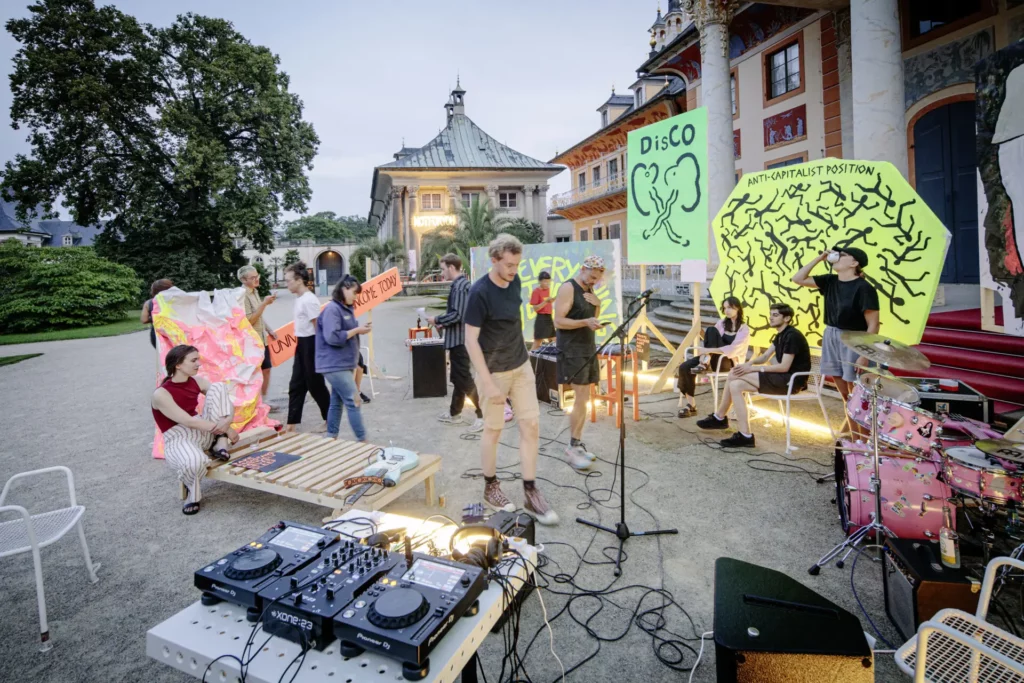
“Open Studio” of the Summer School 2021 on the Design Campus, Decorative Arts Museum of the Dresden State Art Collections, photo: Oliver Killig, ©SKD
A summer school for design and democracy
With Design & Democracy as the guiding theme, the first edition of the Summer School Class 2021 comprised a program of workshops, project work, lectures and discussion panels, which lasted several weeks. The program was developed in collaboration with the internationally renowned curators and design critics, Amelie Klein from Vienna and Vera Sacchetti from Basel. Each year, visionaries are invited as ‘heads of school’ to develop a program for a temporary ‘School of Utopias’ together with the Design Campus team. Following on from progressive schools of thought in art, design and the avant-garde – such as Black Mountain College, Global Tools and other experimental initiatives throughout history – utopian thinking serves as a tool for designing viable alternatives against the backdrop of emerging crisis scenarios. First and foremost, the crisis of democracy, which, with regard to the challenges of coping with the Covid pandemic, is currently becoming clearly apparent, but which can be traced back to deeper fractures in society. More than one reason, therefore, to dedicate the opening to this volatile issue.
The wide-ranging one-week workshops, each led by international tutors and experts from different disciplines, examined the complex interactions between design and democracy from a global perspective. For example, Mexican urbanist and activist, Gabriella Gomez-Mont, questioned the mechanisms of engagement and participation under the title Realists of a Larger Reality: Cities, Political Imagination and Social Creativity. Dutch architect and theorist, David Mulder van der Vegt, explored the architectural and visual manifestations of parliaments, assemblies and power structures in his workshop Power Building. Design researcher and author, Basma Hamdy, a Qatar-based teacher, discussed forms of activism and protest culture in her workshop Future Realities: Designing New Worlds. Vivian Tauchmann from Leipzig conveyed strategies of solidarity through performativity in her dance workshop Solidarity Is A Verb, and Canadian-born Jerszy Seymour, designer and co-founder of the Dirty Art Department at the Sandberg Institute in Amsterdam, searched for a new visual language for utopians and revolutionaries in his workshop New World Propaganda. Finally, in their workshop Making A Deliberative Design Museum, Klein and Sacchetti, together with the Brazilian activist and co-founder of the feminist platform Futuress, questioned the democratic principles of museum and curatorial work. The goal of all workshops was to empower participants from all over the world (3G made it possible!) to explore both the creative scope and political impact of artistic design disciplines such as architecture, design, fashion or media design. In addition, there were weekly lectures in which academics and researchers provided insights into the theory and practice of design and democracy. The public discussions are still available on the YouTube channel of the Staatliche Kunstsammlungen Dresden. At the end of each week, the prototypical and largely ephemeral workshop results were publicly presented and discussed in the form of an ‘open studio’ or happening. Amelie Klein and Vera Sacchetti sum it up thus: “Without a doubt, design has contributed in many ways to the loss of trust that democracy faces today, from poorly designed, confusing ballot papers to social media echo chambers that control the flow of information and thus people’s beliefs. In this year’s Summer School, we wanted to question and analyze why this can come about, and beyond that, develop and test alternative proposals. It’s time, and also our duty, to rethink the role of design in democracy and society and to develop alternatives to the status quo."
A temporary design school for whom?
The Summer School is intended as an additional opportunity for postgraduate students and young professionals to deepen their knowledge and create networks. In the selection of participants special emphasis is placed on creativity and diversity. Thus, in addition to discounts for students and those experiencing financial hardship due to the pandemic, there is a Diverse Vision Scholarship. Further scholarships are made available as part of collaborations with universities and other partners. In 2021, for example, together with the German Design Graduates initiative, six graduates from design schools in Germany were able to participate with a free ticket. There was also another collaboration with the Vienna Design Week. With the Design Campus network – for example with the iF Design Foundation – the opportunities for further scholarships and collaborations are increasing.
The next Summer School will take place from 18 July to 26 August 2022, led by the internationally acclaimed design duo Formafantasma Andrea Trimachi and Simone Faresin, founding professors of the new Geo Design program at the Design Academy Eindhoven.
For more information about the project, the program, and to register for the 2022 Summer School, visit www.designcampus.org.

